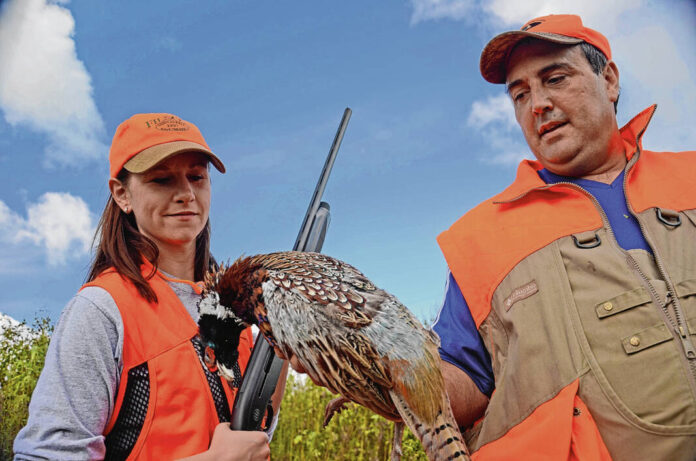One of the first pieces of hunting equipment I owned was a Buck 102 knife. It had been my father’s. He gave it to me. Over the years, I’ve notched the sheath each time I took a deer. The line of notches extends the length of the leather blade protector.
A knife plays an important role in the hunting process. It’s a link between the field and dinner table.
Hunting seasons are open across the country. Big game, small game, waterfowl and upland hunters are collecting the bounty of fall. The process of turning the game into table fare is, to me, nearly as much fun as the hunt. There are so many ways to use the healthy wild game for food. Roasts with potatoes, carrots, mushrooms and onions. Steaks on the grill. Deep fried turkey nuggets. Baked whole birds with wild rice. Sausages and jerky.
The process of butchering your own meat is, like most things in life, improved with experience. With enough practice, one becomes proficient. The basics are pretty simple, though. Be careful. Understand the process. Have the right equipment. Enjoy the experience. If you have the right equipment from start to finish, the process is going to be much easier and more enjoyable.
Buck Knives recently released list of tips that I read and found to be spot-on. I’m passing on those tips to you with my personal observation of each:
Plan ahead
Different types of hunting require different gear. Most bird hunters are not processing game in the field, but big game hunters are. Big game hunters are gutting, skinning, quartering and caping game. A single knife isn’t ideal for all this work. A bone saw is a big help. Ropes — paracord also works well — are helpful in the process, especially if you are alone. You can tie a leg to a tree, truck or rock to keep the animal in place while you work. A lightweight tarp to set your meat on through the process is nice to have. Game bags, cloth bags to put meat in, help keep meat clean and free of insects.
Take your time
If your knife is as sharp as it should be, then you need to be careful while using it. This begins with not being in a rush. Make a plan and follow the process. As you work through the steps, stay keenly aware of what you are doing. If you are working with someone else, never cut toward them. Knife blades slip all the time. Also, don’t pull the knife towards yourself, either. If you get tired, take a break. It’s better to walk out at dark after a job well done than it is to cut yourself or your partner because you were in a hurry. Even if you are prepared and working wisely, accidents will happen. For this reason, you must carry a proper first aid kit with you.
Have the right knife
You can gut a deer with about any knife. The right one makes the job much easier. My uncle has carried the same Buck 110 folding knife since the 1980s. There is no telling how many deer he has processed with that knife. I use different knives for different processes. I carry a gutting knife and a skinning knife in the field. I also carry a folding bone saw. It has interchangeable blades, so it’s also my tree saw. I usually leave the caping to my taxidermist. Backcountry hunters don’t always have that luxury; they need to carry one more so than an eastern deer hunter.
Keep it sharp
A sharp knife is essential. Trying to process game with a dull blade is miserable. Success begins with having a quality knife and taking care of it. There are all kinds of sharpening tools on the market that make it easy for hunters to keep all their blades sharp. My go-to at home is a small sandpaper-style sharpener made by Work Sharp. But you also need to carry a sharpener with you in the field. A little sharpening stone in your backpack is a must. During in-the-field processing, you can tune up your knife with a few seconds of sharpening.
See you down the trail …
Brandon Butler writes a weekly outdoors column for the Daily Journal. For more Driftwood Outdoors, check out the podcast on www.driftwoodoutdoors.com or anywhere podcasts are streamed. Send comments to [email protected].





